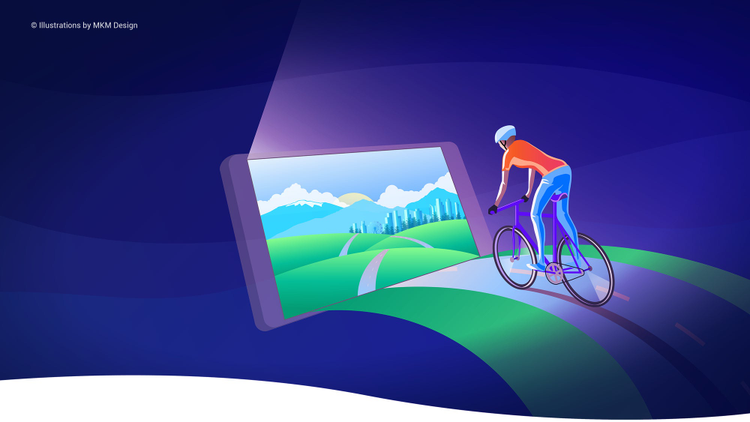Vector illustrations hold strong. There are so many project objectives that can be achieved with custom illustrations! Title images for blog articles are one of them. To me, it seems like they’re getting more and more popular from one resource to the other. Original graphics captivate us and quickly transfer the topic of the post for the better.
A general approach when it comes to creating blog illustrations
In all honesty, having the task to illustrate an article for a fintech blog for the first time was daunting. I remember the overarching issue of transferring the theme of an article metaphorically with graphic design. This required research. I knew I had to seek new ideas.
Having gone through years of creative process after creative process, I’ve finally developed a “go-to” approach for creating blog artworks. Once a particular article topic and its messaging are obtained, here are steps that work 99.9 percent of the time:
- study the general message of the content
- (try to) define buzz terms that become a point of departure for the graphic
- run similarities between the illustration and other areas of human activity
- play out the theme through an awesome color palette
With (well let’s face it, tons of) practice, I have formed three main techniques to create blog illustrations.
Literal technique
So, while this seems to be the simplest, it certainly doesn’t mean it’s the “winning.” The literal method means showing a character working on say, a laptop, or a mobile device; and then the background may feature the display of the device or interface elements reflecting the theme of the article.
Combo technique
The combination method entails character(s) coming to grips with the interface. They can intermingle with its elements that reflect symbolic exaggerations, such as an individual entering or leaving a mobile device, stuff like that.
Abstract technique
We all understand that abstracts are figurative. So, in illustration, it means that the “techy sphere” is projected on other spheres of personal (or professional) life and is shown through the lens of different areas. Renderings of this kind are basically when you see images of devices that are featured in a secondary fashion or aren’t used at all. The intrigue can be heightened with unexpected scales, perspectives, or metaphors.
Tips when it comes to the design process
Color. A suitable selection of color adds a true balance to the graphics perception in connection with the theme. Even better, it supports the psyche of the illustration and sets the mood: I love featuring vibrant tones for entertaining content, whereas oftentimes a minimal palette corresponds nicely to the business themes.
Composition. When creating vector artwork, it’s fundamental to select the approach for a theme. This can be by means of one character catching all the attention of the user, or a group of characters interacting with one another and reflecting an activity based on the article’s message.
Details. Working on a vector graphic, don’t forget about the details and accents, which make a key contribution to the general image, style, and originality of the illustration.
Inspiration. Make your own collection of images for inspiration. For example, I have been archiving color palettes and combinations for years. Similarly, you can collect interesting photos, sketches, illustrations, and artworks by other creatives. And, this is crucial – make sure you’re inspired as opposed to attempting to copy someone else’s work. Sometimes just observing inspirational sets can trigger an immediate concept.
Don’t ever stop where you are, always stay in search of new ways to recognize your artistic style and creativity! We all have so many, it’s crazy.





